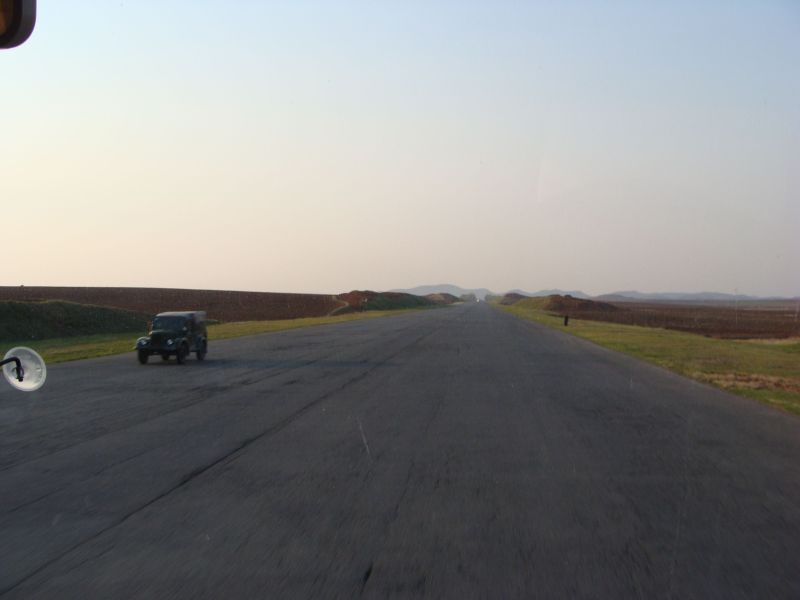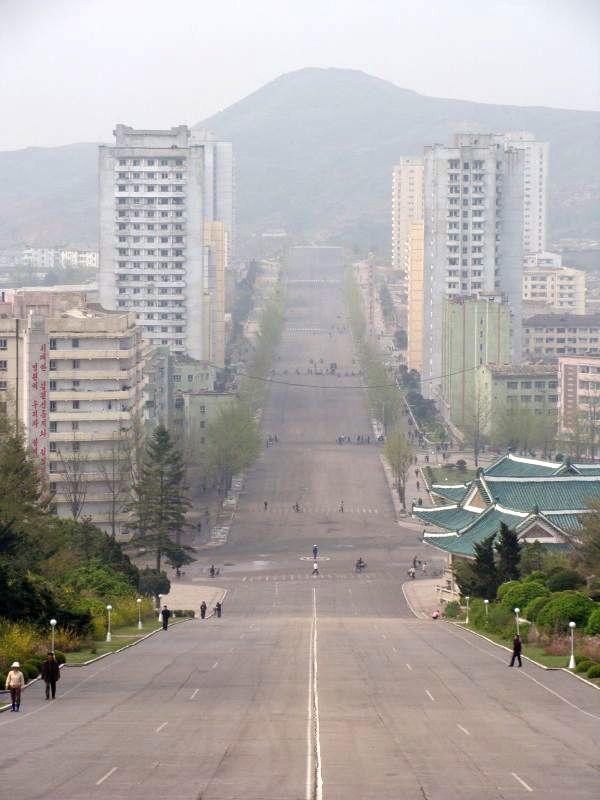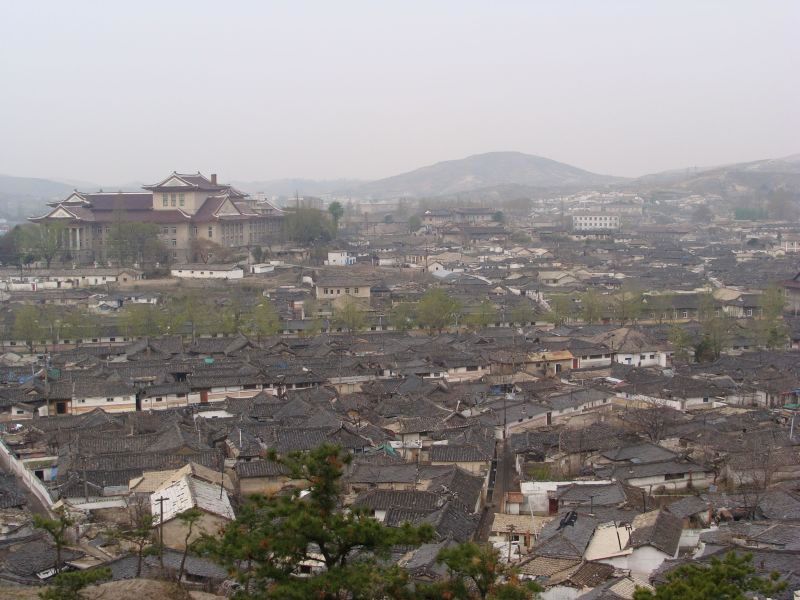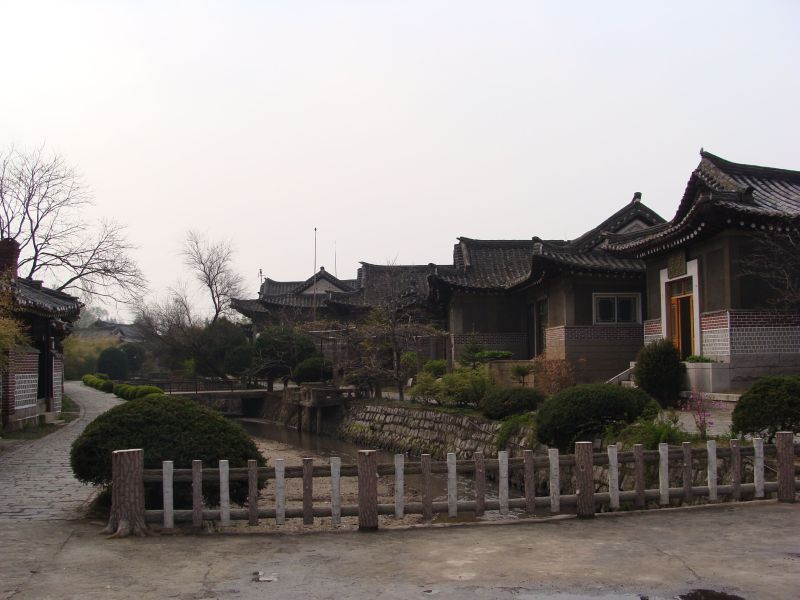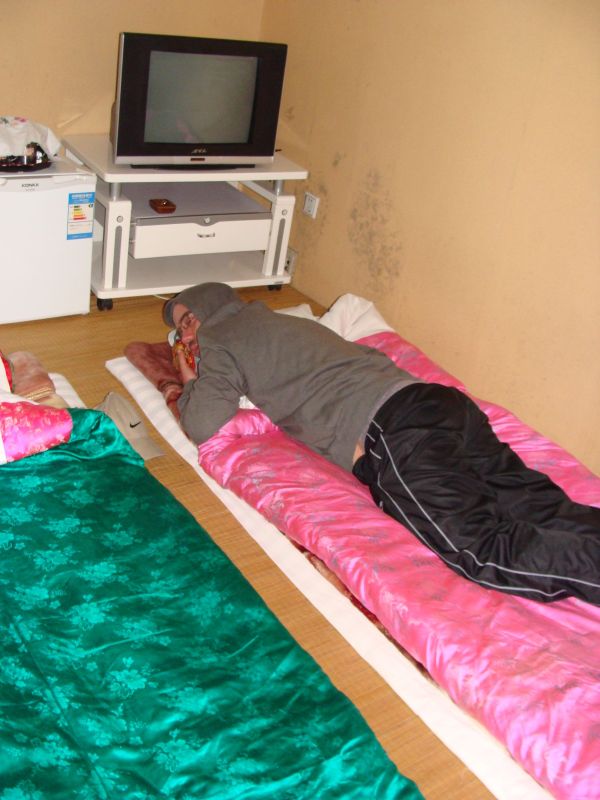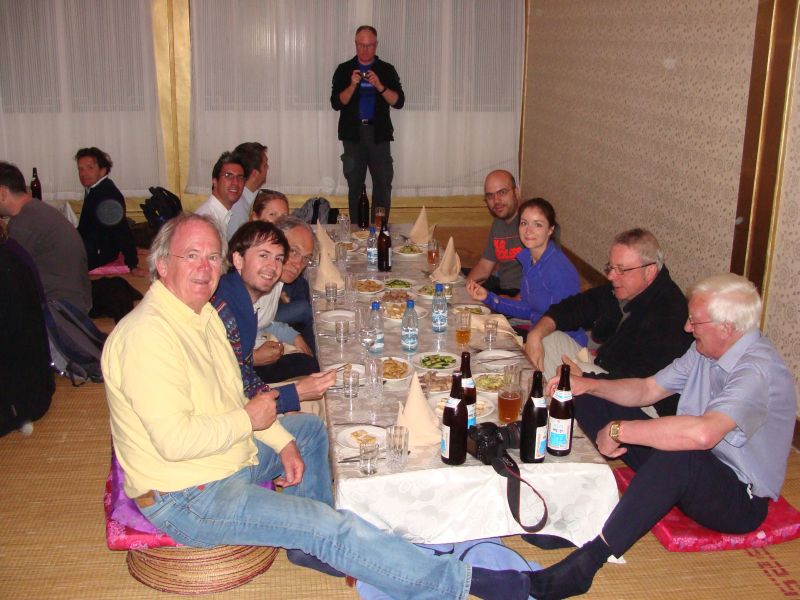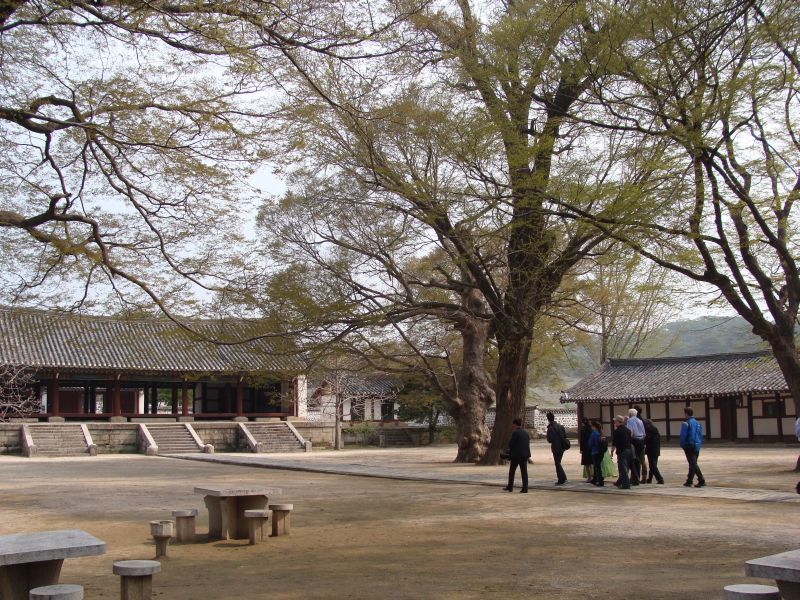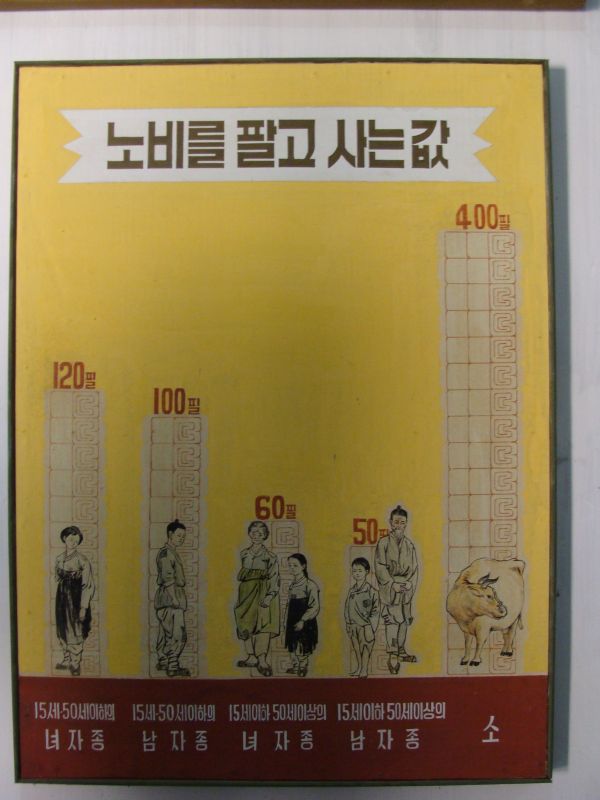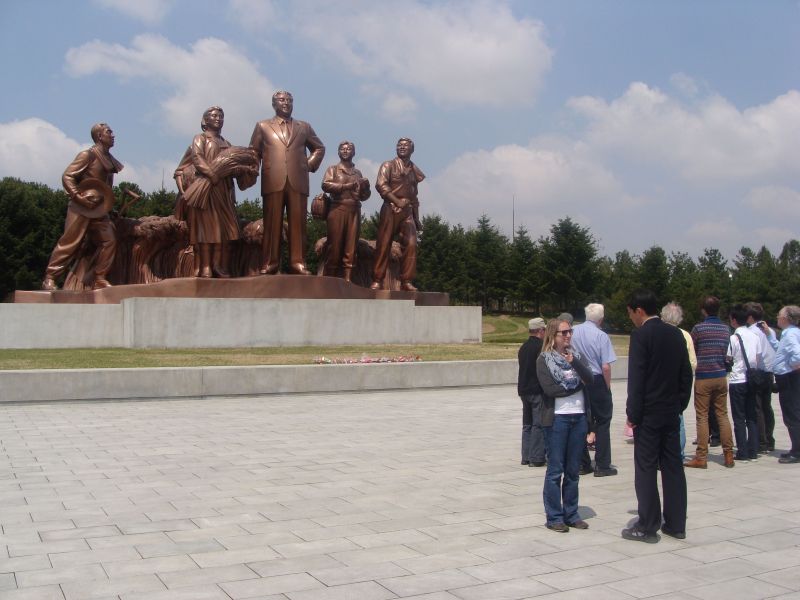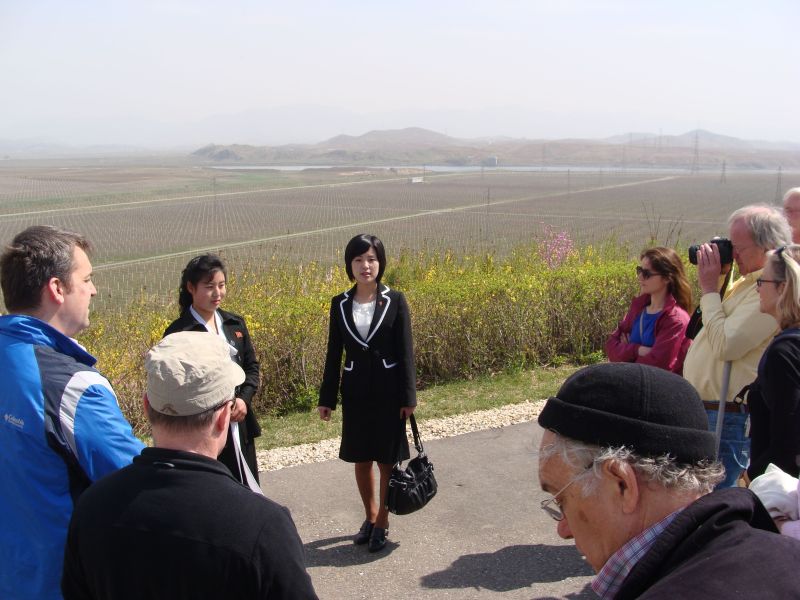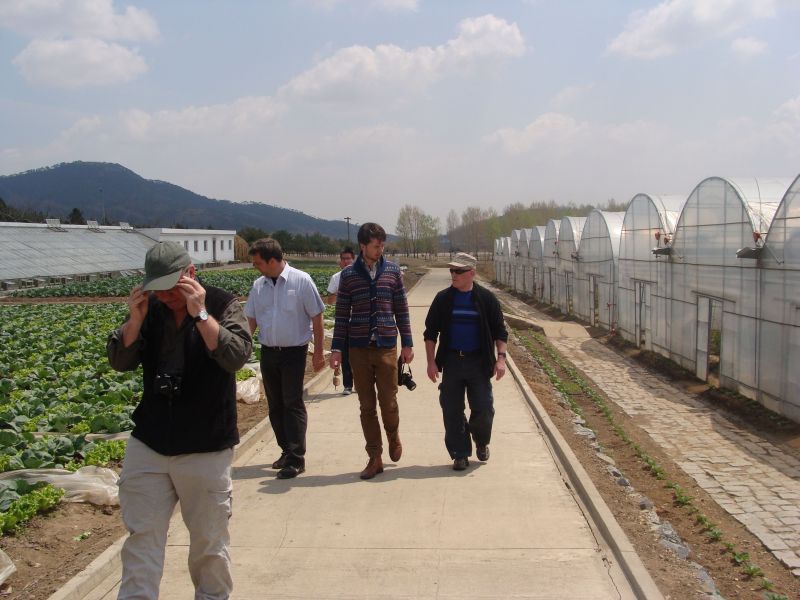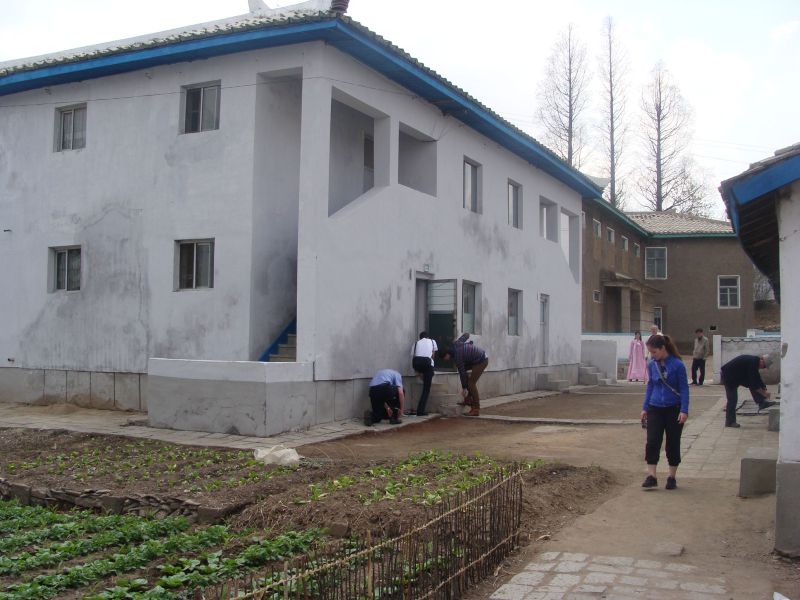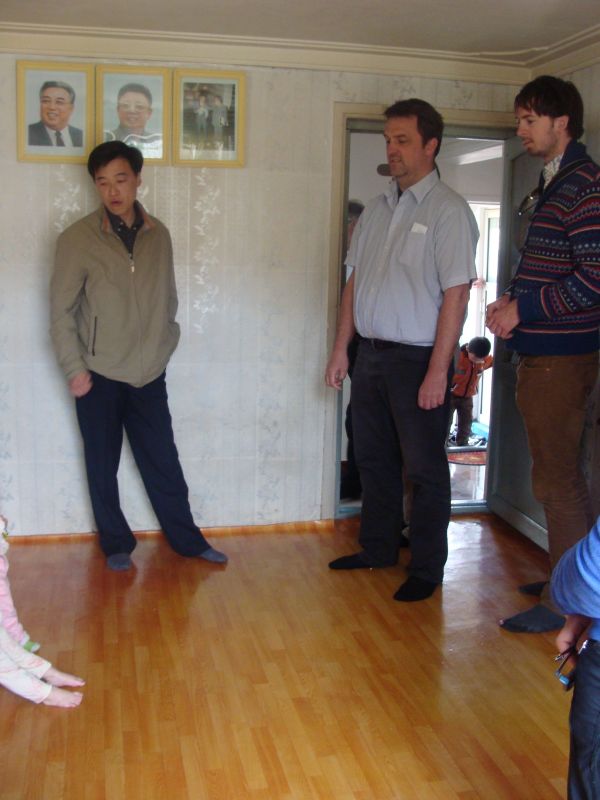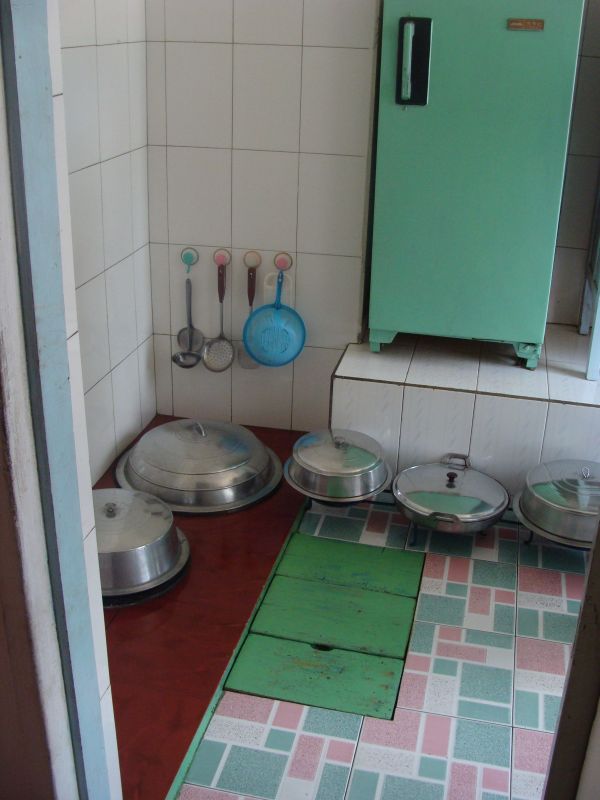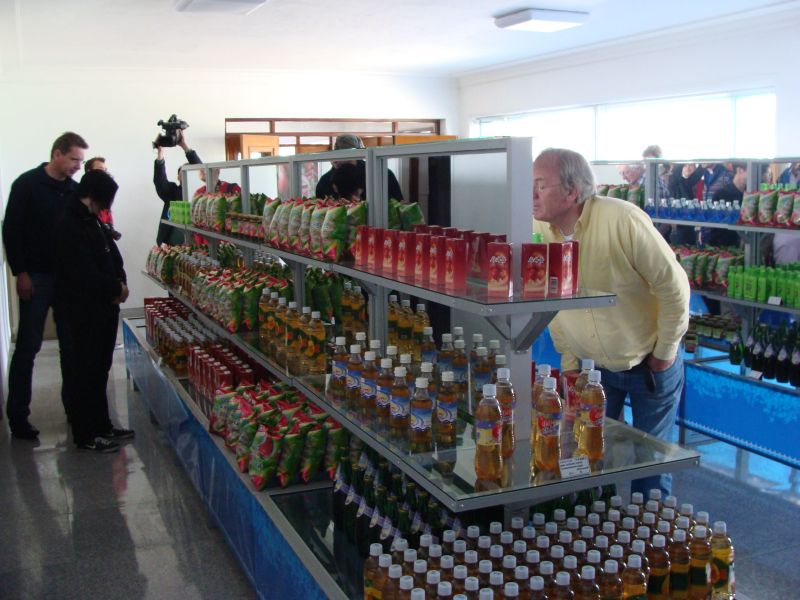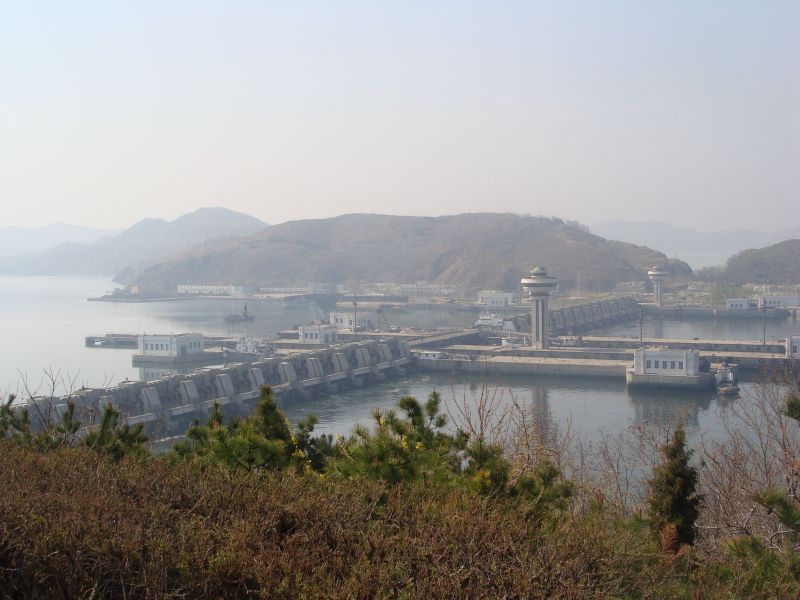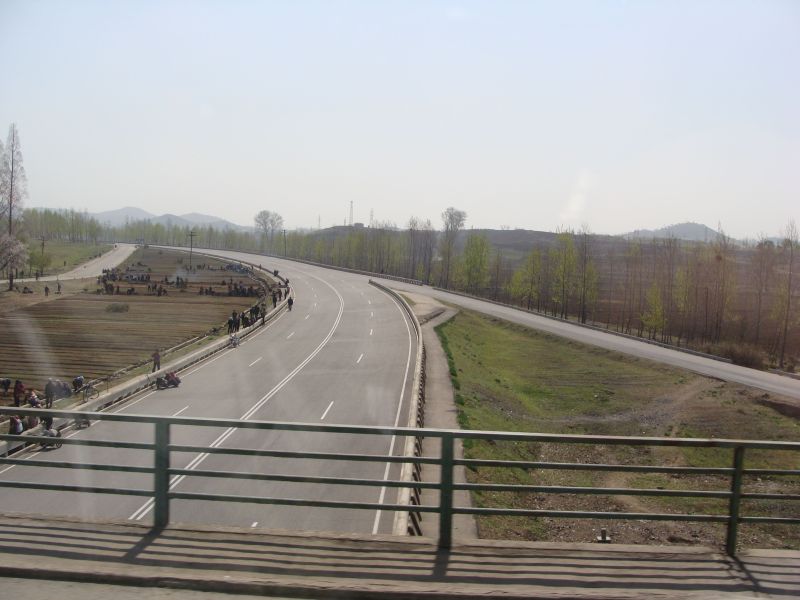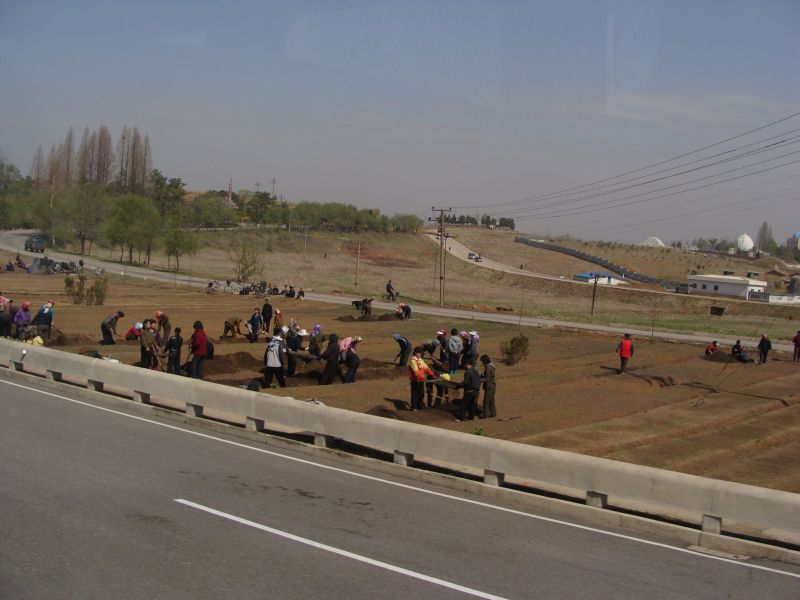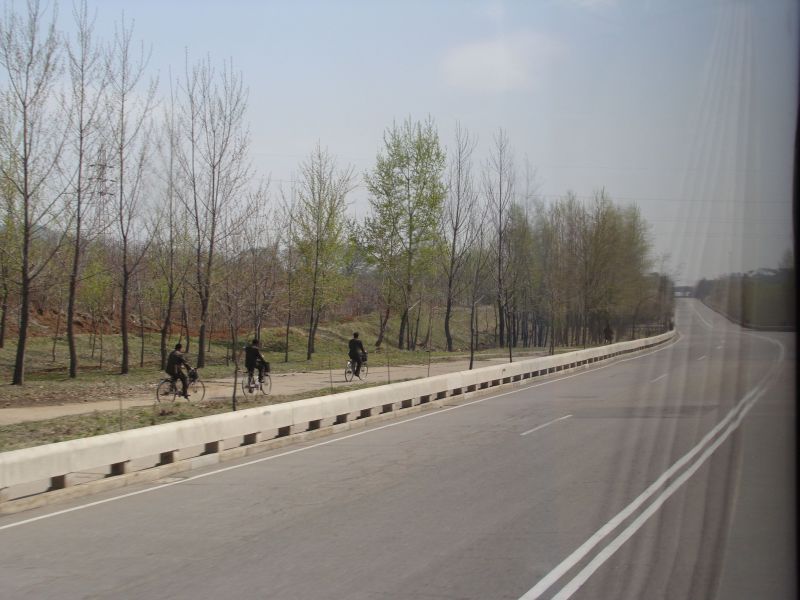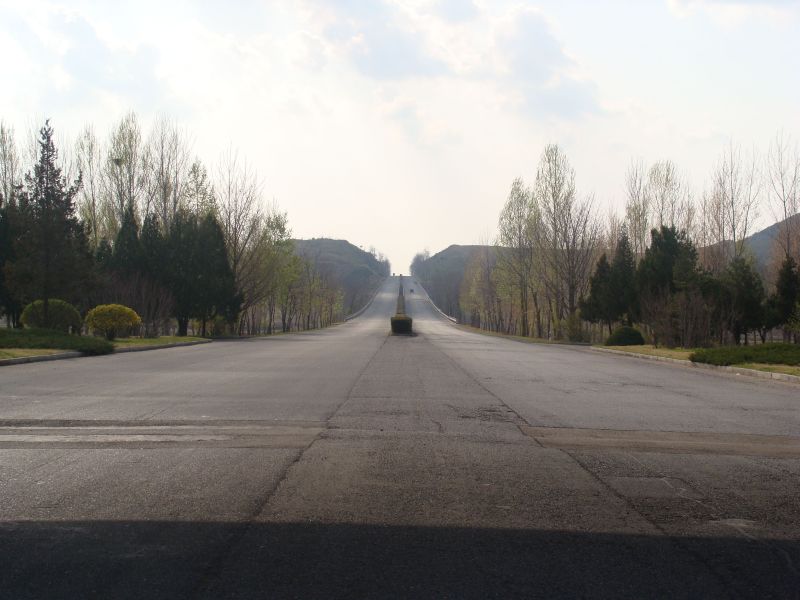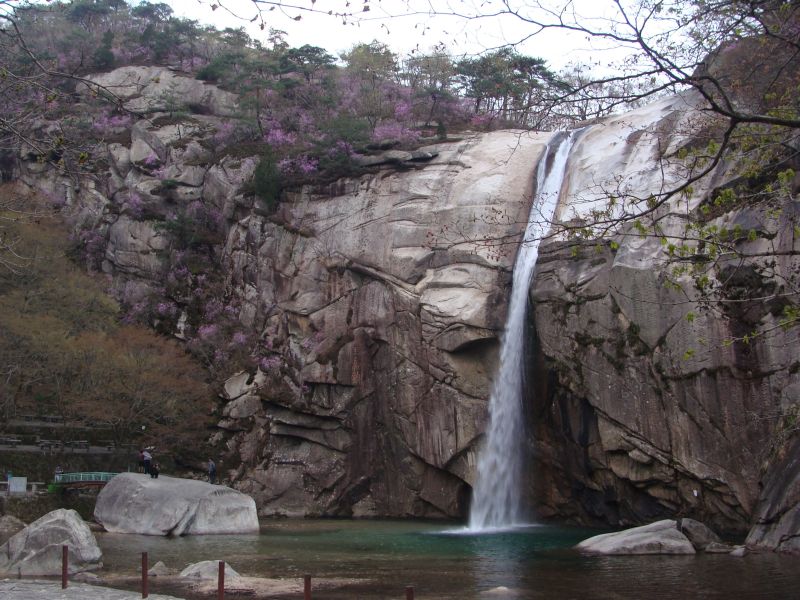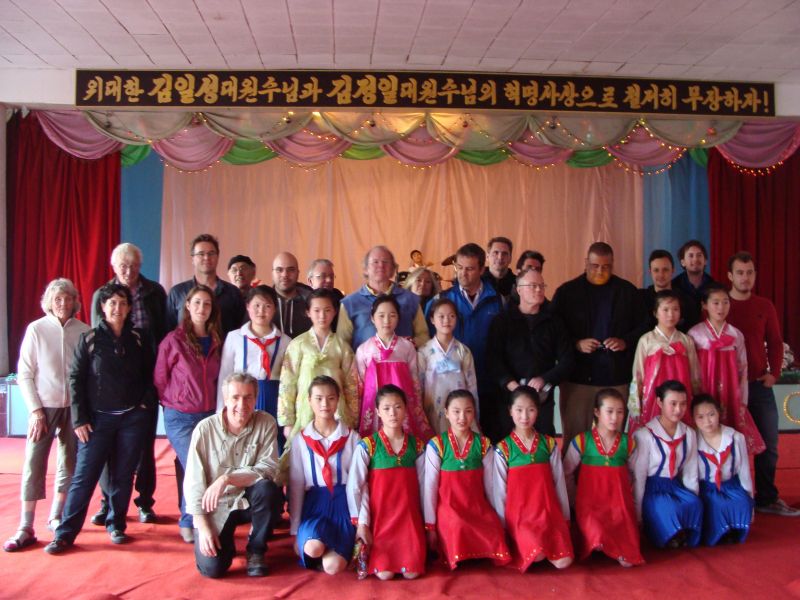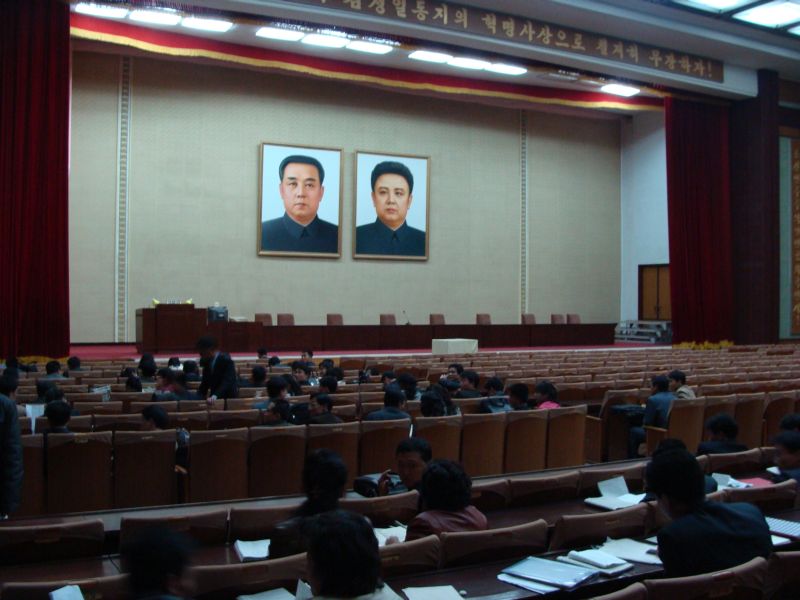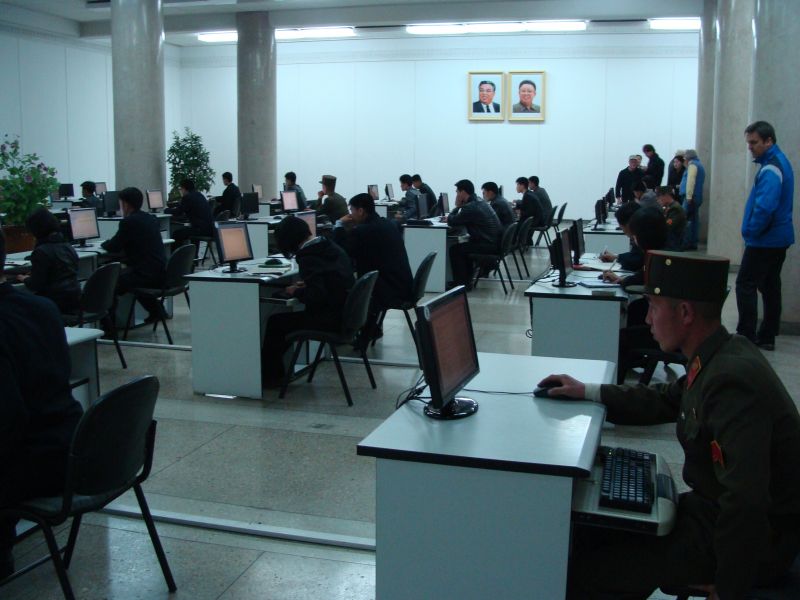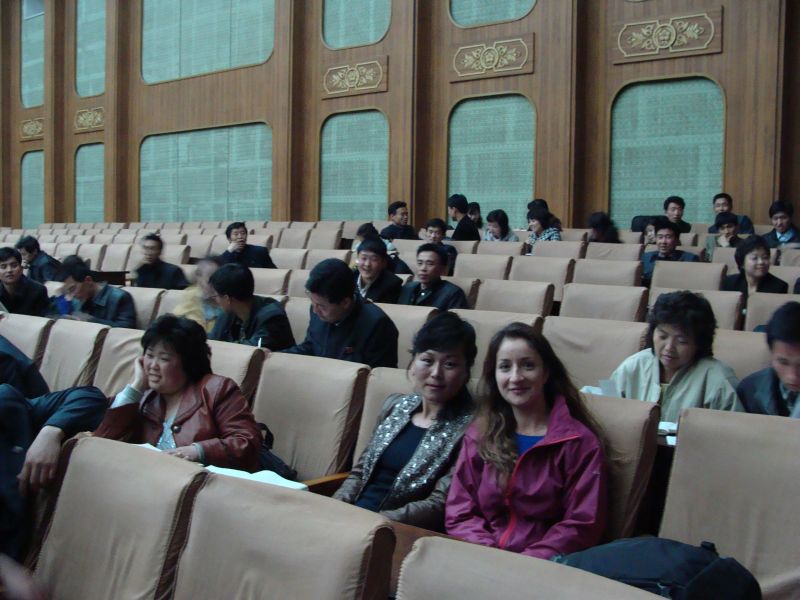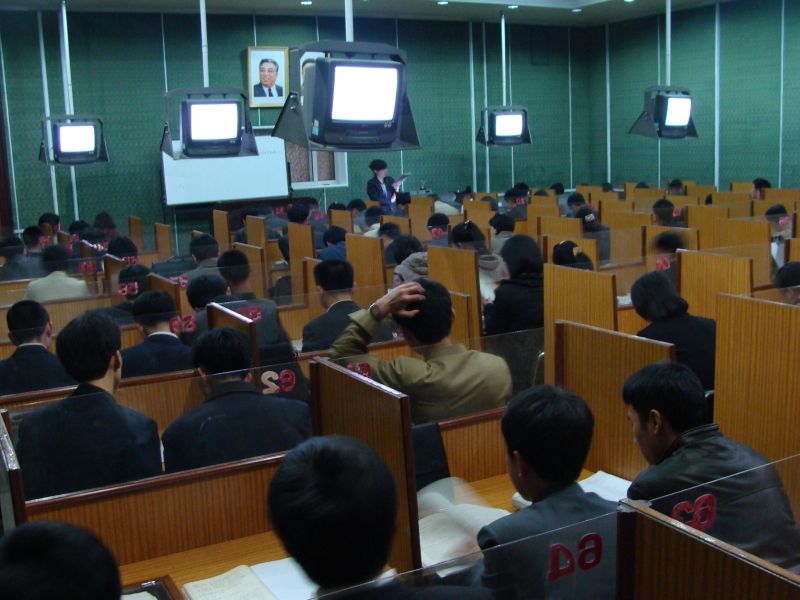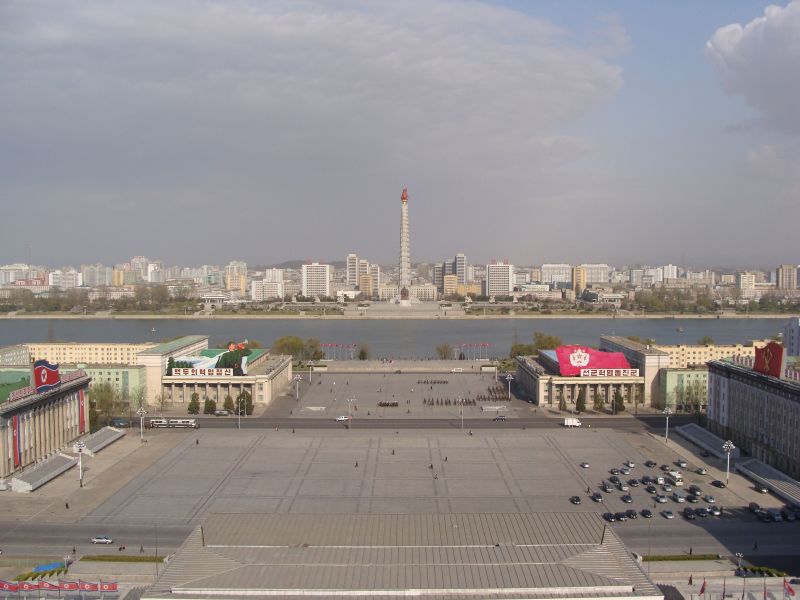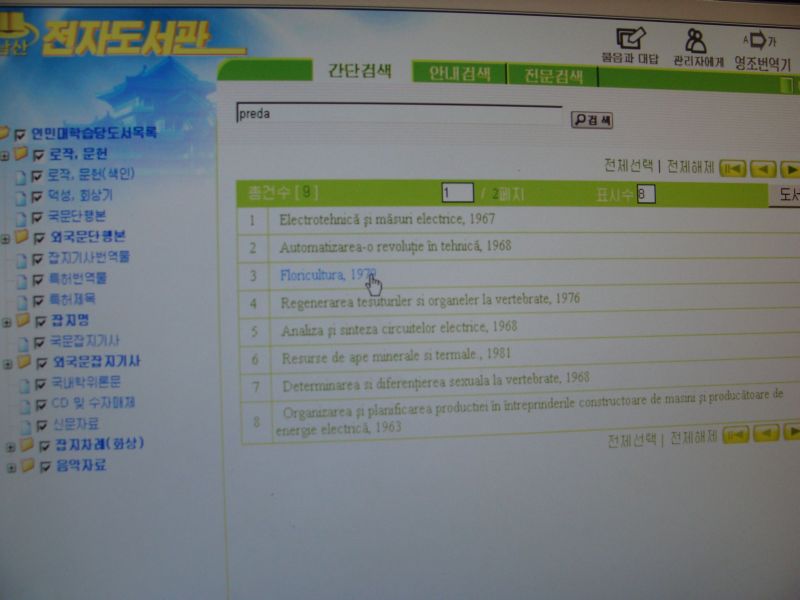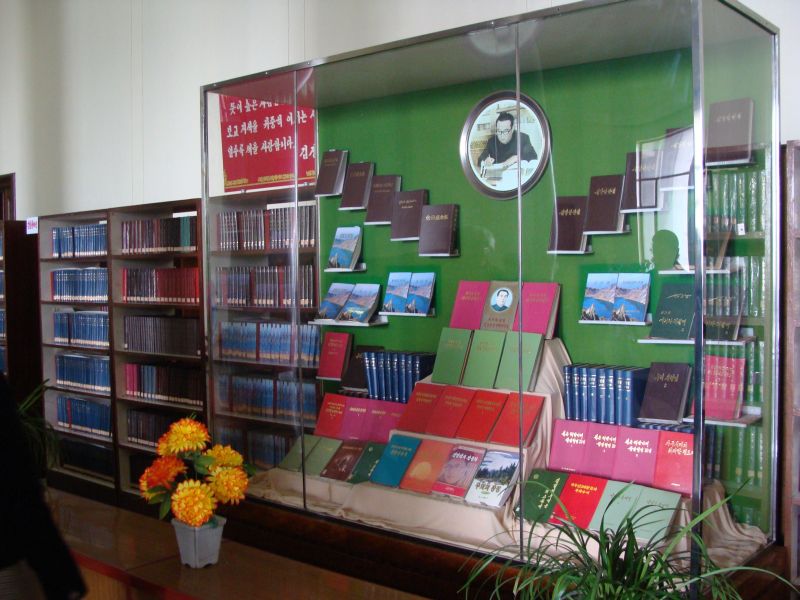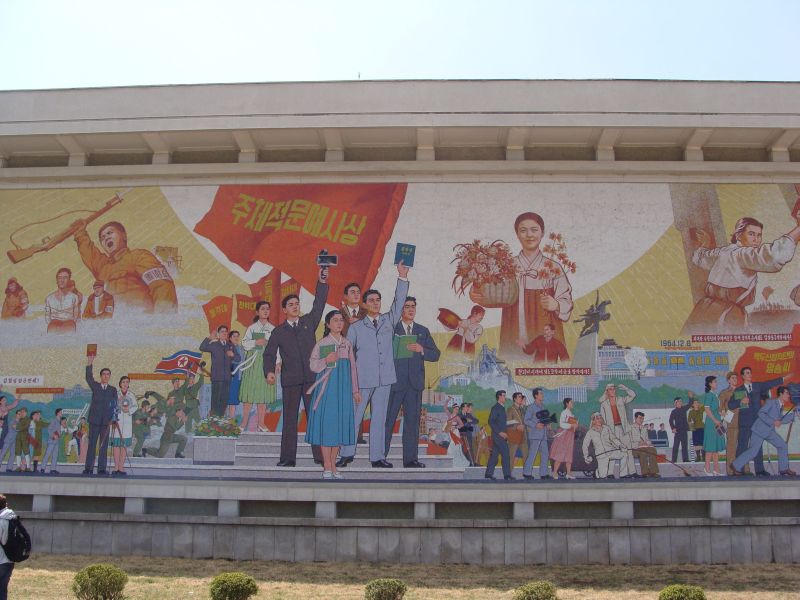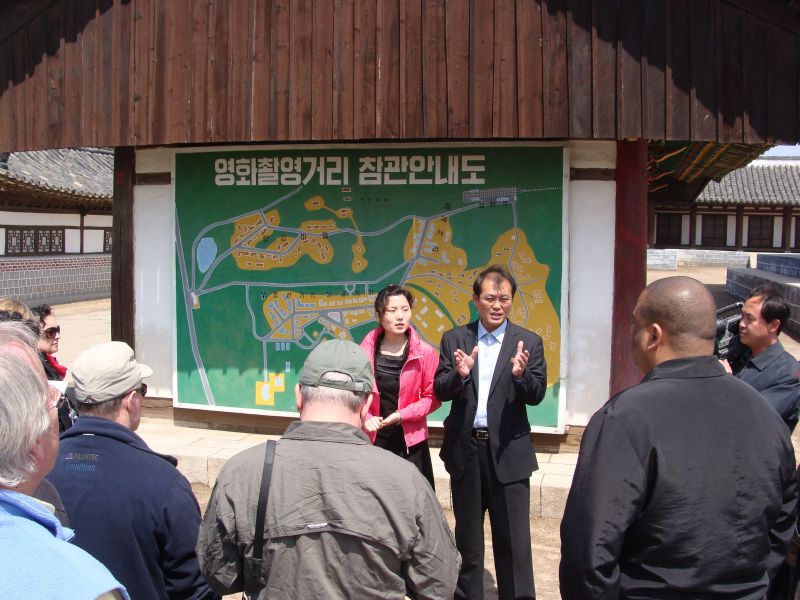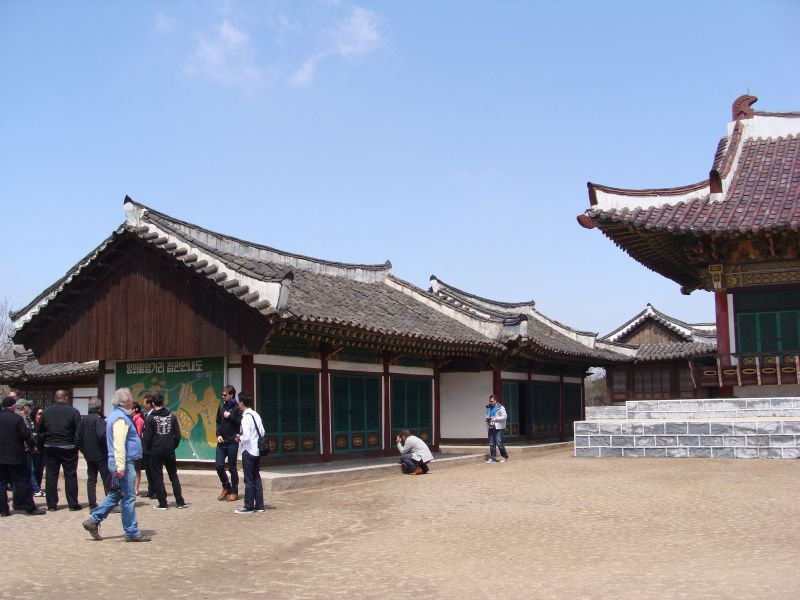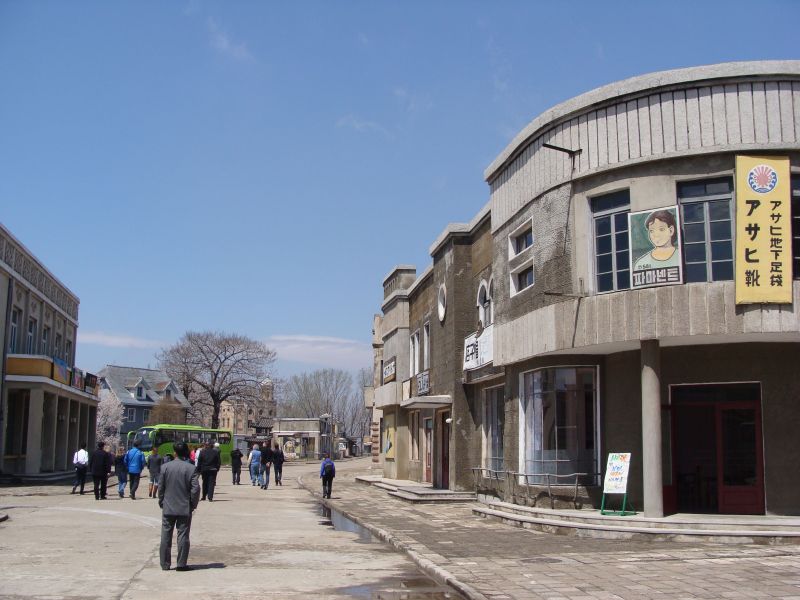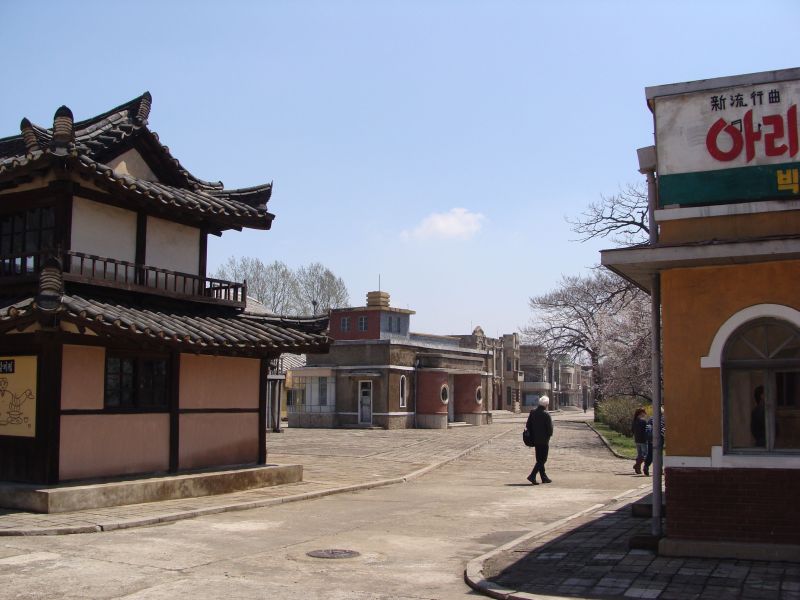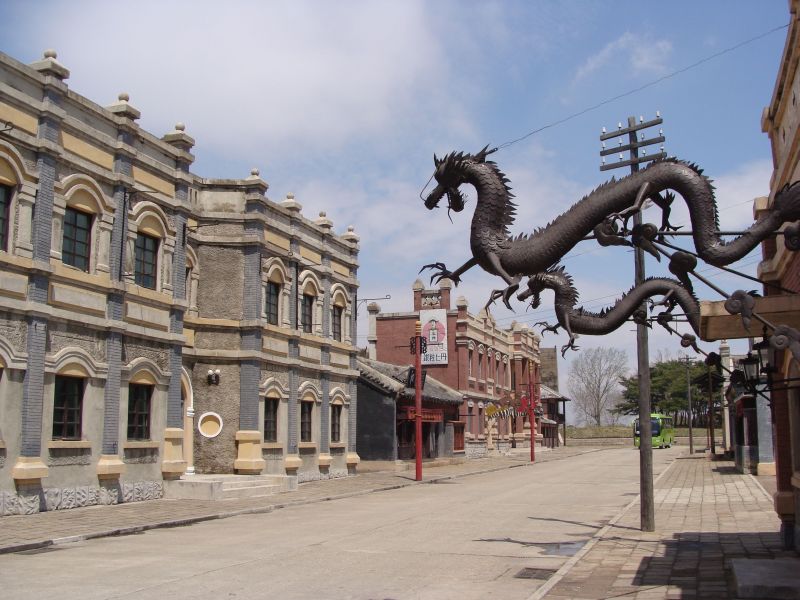Agricultural visit and industry briefing
A trip to the countryside
There were two trips outside of the capital. One was towards Nampo (West) and the other one towards Kaesong (South). Other tours have different trips available, such as Eastern litoral and the North Eastern mountains.
The roads were pretty much empty and bumpy but very clean and neat. On the side of the road, every single patch of usable land was being used for agriculture.
Last picture shows the Pakyon waterfall, newly introduced in the foreign tourists’ schedules.
Education
The guides emphasized how the revolution improved the education in DPRK, increasing literacy rate by providing free compulsory school. We visited a middle school where, in the end, we attended a short musical performance. Then we moved to the Pyongyang public library. We visited some reading and lecturing rooms. Nice views from the balcony. In the book lending section I was able to find numerous foreign science books, including some from Romania.
Last picture is a display of books written by Kim Il-sung.
Film studio
This is the Pyongyang movie studio. Opened just after the founding of the country in 1949 to create patriotic features. Today there are several outdoor sets, resembling Korean, Chinese and Japanese towns.

